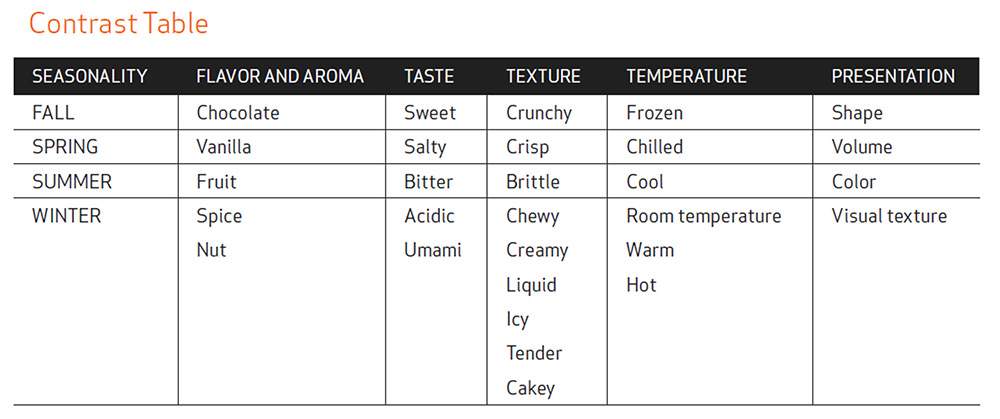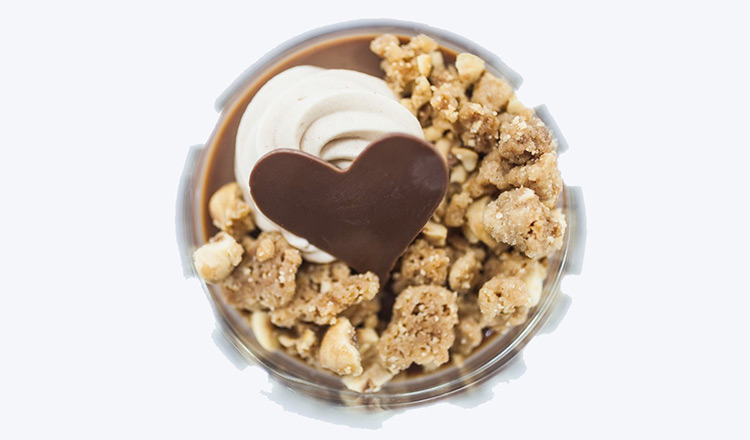Since you are a DISH member, we know that you likely have dessert ambitions beyond the classic cookies and coffee. And why shouldn’t you? The world of pastry is exciting and decadent!
If you are home channeling your inner pastry chef, designing a composed, or plated, dessert for your next dinner party, remember to engage all your senses for a dynamic creation that is full of contrasts and complementary flavors, textures, and temperatures.
Our pastry contrast table is a visual guide to understanding the basic characteristics that you can use in the creation of a plated dessert. When conceptualizing desserts, think about incorporating a number of contrasting characteristics by using different components, but never add components just to have another contrast. The number of components should make sense for the dessert.

Combining contrasting elements on one dessert plate will keep the palate interested and excited. The classic apple pie à la mode is a perfect example. Think of how it relates to the contrast table: An exceptional apple pie will have a crisp, flaky crust and perhaps a filling that still retains a little tartness from the apples, while the ice cream will lend its creamy, soft texture. The pie should be served warm to bring out its flavors and aromas, as well as to provide temperature contrast with the cold ice cream.
Contrasting elements in a plated dessert are divided among flavor and aroma, taste, texture, temperature, and eye appeal. When using the chart, keep a basic understanding of culture and regional availability of ingredients to ensure the most successful combinations.
Flavor and taste combinations are the most interrelated components on this chart. Depending on your selection of ingredients, one will naturally follow the other. Also keep in mind that sweetness will vary only in intensity, but will be a component of all desserts to some degree.
The object of the textural component is to have a balance of mouthfeel—too much crunch is not necessarily a good thing. It is also important to be aware of the temperature of the components on any plate or menu. While each plate does not necessarily need contrasts of temperature, the overall menu should present the full spectrum.
Presentation does not mean the plate needs to be intricately presented. Today, one of the biggest trends is toward minimalism: presenting authentic, natural flavors in as fresh and simple a manner as possible.


